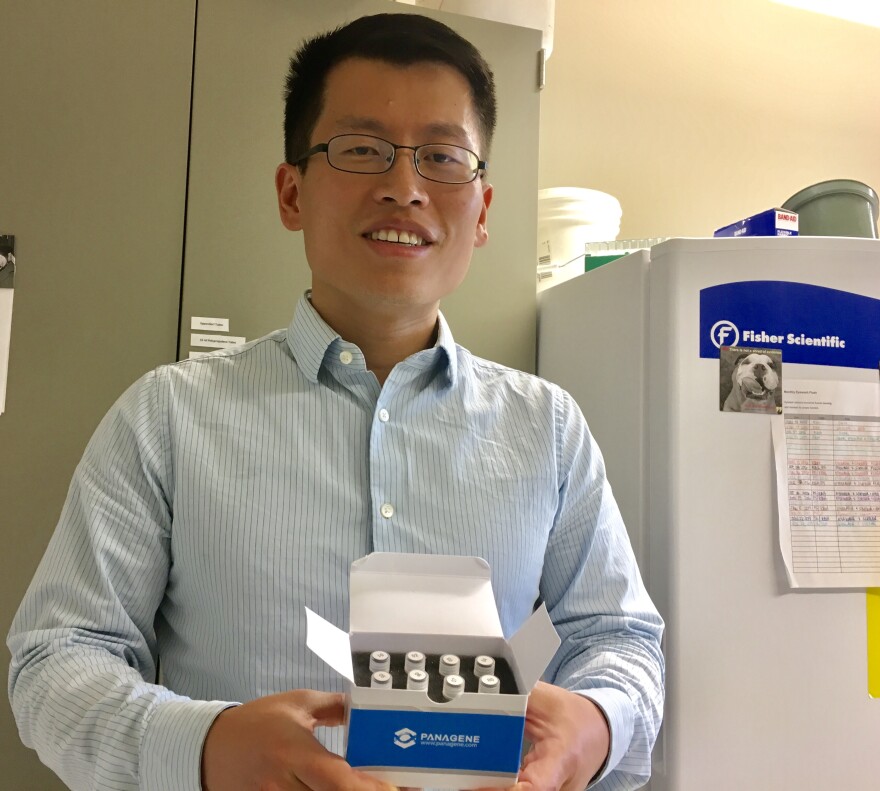For over two hundred years, apple tree growers have tried desperately to protect their crops from what scientists say is the oldest, most serious and most perplexing bacterial disease of fruit trees. It’s called “fire blight.” And the name describes the dried up, scorched look of the affected branches.
Plant pathologists all over the world are in search of an effective way to control fire blight epidemics, and a recent discovery in Connecticut could offer growers a new line of defense against the disease.
In 1950 scientists invented Streptomycin, the first antibiotic for controlling fire blight. It worked really well for just over 20 years, but then the bacteria started developing a resistance to the antibiotic.
Since then plant pathologists have been looking for new ways to control fire blight.
“I feel it’s my responsibility to help the growers to come up with some ways to combat this disease,” said Quan Zeng, the Assistant Plant Pathologist and Bacteriologist at the Connecticut Agricultural Experiment Station, “as a plant pathologist, I often start my research from a disease problem that really has a big economic value.”
Apple trees contribute about 14 billion dollars to the national economy each year, and its estimated annual losses to Fire Blight are more than 100 million.
Zeng is one of seven authors on a recent study that proved there is a new type of technology that can be used to control fire blight.
“The short answer is, I borrowed some old ideas from animal pathogens and combined with some of the uniqueness in plant agriculture and come out with this research findings,” said Zeng.
The result was Antisense Peptide Nucleic Acid- Cell Penetrating Peptide.
It uses a special strand of Peptide Nucleic Acid, PNA. It looks just like DNA. And what this PNA can do is break into the cells of bad bacteria. Then it scans all the bacteria’s DNA to find the essential gene in the bacteria that keeps it alive.
“So they will come and bind to those essential genes, and once the essential genes are bound by these molecules, those genes will be destroyed,” said Zeng.
Unlike antibiotics that kill all bacteria, good and bad, you can get this to kill only the bad bacteria.
Zeng said this selectivity also means it’s less likely the fire blight bacteria will develop a resistance. But even if it does, it’s easy to fix.
“The beauty of this technique is you can design the sequence, you can write a code. And if the bacteria change their sequence as a result of resistance you can rewrite the code so you overcome this resistance,” said Zeng.
There are other methods out there people are using to protect their trees from fire blight, but none of them are as adaptable, said Zeng.
Zeng had a couple of samples in the freezer. In each small tube there was just a little bit of clear liquid.
“Frozen, just like a piece of ice,” Zeng said.
A small piece of ice that could cost a couple hundred dollars. That’s the next hurdle, getting the cost down.
“This is just the like the initial step of this long whole long process, from the research lab to the orchard to you now finally experimental orchard to growers and their application so their spring tank,” said Zeng.
And even if it does take awhile to get this in the hands of growers, Zeng said, now that they’ve proved this technology is effective, it can be used by other plant pathologists.
“To me it opens a new, a whole area in plant disease management...I can see that it also has a great potential to be used in control in controlling many devastating plant diseases.”
Zeng’s research was published in the journal Frontiers in Microbiology in April 2017.
This story was updated to correct the spelling of Quan Zeng's last name.

